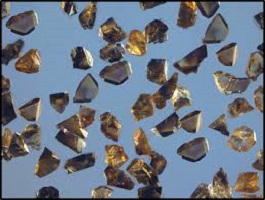Boron nitride-based materials: synthesis and applications in water purification
General Description
Boron nitride-based materials have gained considerable attention in recent times for applications in various fields. Owing to their extraordinary characteristics, i.e., high surface area, low density, superior thermal stability, mechanical strength, and conductivity, excellent corrosion, and oxidation resistance, the BN nanomaterials have been explored in water remediation. The synthesis of boron nitride nanostructures involves various methods such as ball-milling, chemical vapor deposition (CVD), laser ablation, and more. Boron nitride-based materials have emerged as effective adsorbents for water purification due to their unique properties, including superior adsorption performance for heavy metal ions. Boron nitride nanosheets have great potential in membrane separation applications, improving separation performance when incorporated as fillers in membrane matrices. In summary, boron nitride-based materials demonstrate promise for water purification and membrane separation technologies.

Figure 1. Boron nitride
Synthesis
The synthesis of boron nitride nanostructures involves several commonly used methods. These methods include ball-milling, chemical vapor deposition (CVD), laser ablation, arc-discharge, plasma-jet method, electrospinning, autoclave, and template synthesis. Each method has its own advantages and is suitable for different applications. boron nitride nanosheets are often synthesized through exfoliation from bulk h-BN using techniques such as ball milling and ultrasonication. Ball milling can introduce structural defects in the boron nitride nanosheets, which are desirable for adsorption applications as these defects serve as active sites for capturing pollutant molecules. Ultrasonic exfoliation with polar solvents can also break the weak van der Waals forces within the boron nitride network. Chemical vapor deposition (CVD) is an effective technique for producing high-quality boron nitride nanosheets. Precursors like BCl3, NH3, N2, ammonia borane, and borazine are used in combination with transition metal substrates such as Ag, Au, Ru, Ir, and Cu. The operating parameters, especially temperature, play a crucial role in controlling the properties of the resulting boron nitride nanosheets. However, boron nitride nanosheets synthesized via CVD have low yield and fewer defects, which may limit their application as adsorbents. Additionally, ball milling and chemical methods can be employed to synthesize boron nitride nanoplatelets with desirable surface characteristics. Chemical methods can modify the surface of hexagonal boron nitride nanosheets (h-boron nitride nanosheets) to enhance their functionality. 1
Applications in water purification
Adsorbents
Boron nitride-based materials have emerged as effective adsorbents for water purification due to their unique properties. Compared to other adsorbents like carbon nanotubes and metal oxides, boron nitride-based materials demonstrate superior adsorption performance. The polar B-N bonds in boron nitride materials contribute to their enhanced affinity for heavy metal ions, facilitating effective removal from water. The electron transfer from boron nitride materials to the metal ions is facilitated by the "lop-sided" densities properties of ionic B-N bonding, further enhancing their adsorption capability. The versatility of boron nitride-based adsorbents allows for a wide range of applications in water treatment. Their ease of operation, regeneration ability, low cost, and high removal efficiency make them attractive options for water purification. Additionally, the abundance of boron nitride adsorbents and the availability of different structures offer a promising avenue for developing efficient and scalable water treatment technologies. In summary, Boron nitride-based materials show great potential as adsorbents for water purification, offering efficient removal of various pollutants and demonstrating advantages over traditional adsorbents in terms of adsorption capacity and selectivity. 2
Membrane separation
Boron nitride-based materials, particularly boron nitride nanosheets, show great potential in the development of novel membranes for membrane separation applications. By incorporating boron nitride nanosheets as fillers in membrane matrices, significant improvements in separation performance have been achieved. The addition of different loadings of boron nitride nanosheets to a polysulfone (PSf)-based mixed matrix membrane resulted in increased water permeability. This improvement can be attributed to the enlargement of pore sizes and reduced contact angle due to boron nitride incorporation. However, excessive loading of boron nitride beyond 1% led to a decrease in humic acid rejection, potentially caused by boron nitride agglomeration. The selective permeation phenomenon through the membrane was observed, where water molecules could slip along the smooth surface of boron nitride nanosheets or diffuse through the pores and spaces between BNNS layers. It should be noted that fouling became more severe after the addition of boron nitride nanosheets, likely due to their adsorptive nature. The storage modulus of the membrane gradually decreased with higher BNNS loading. Membranes with 0.025% and 0.05% BNNS loadings exhibited excellent flux recovery and fouling resistance, attributed to their high surface charges, lower roughness, and increased hydrophilicity. In summary, the incorporation of boron nitride-based materials, particularly boron nitride nanosheets, in membrane matrices shows promise for improving water permeability, separation efficiency, and fouling resistance in membrane separation technologies. 3
Reference
1. Meng J, Wang D, Cheng L, Gao M, Zhang X. Recent progress in synthesis, properties, and applications of hexagonal boron nitride-based heterostructures. Nanotechnology, 2019, 30(7):074003.
2. Ihsanullah I. Boron nitride-based materials for water purification: Progress and outlook. Chemosphere, 2021, 263:127970.
3. Tang CY, Zulhairun AK, Wong TW, Alireza S, Marzuki MSA, Ismail AF. Water transport properties of boron nitride nanosheets mixed matrix membranes for humic acid removal. Heliyon, 2019, 5(1):e01142.
Related articles And Qustion
See also
Lastest Price from Boron nitride manufacturers

US $0.00/kg2025-11-17
- CAS:
- 10043-11-5
- Min. Order:
- 1kg
- Purity:
- 99%
- Supply Ability:
- 20tons

US $1.50/g2025-04-18
- CAS:
- 10043-11-5
- Min. Order:
- 1g
- Purity:
- 99.0% Min
- Supply Ability:
- 100 Tons




